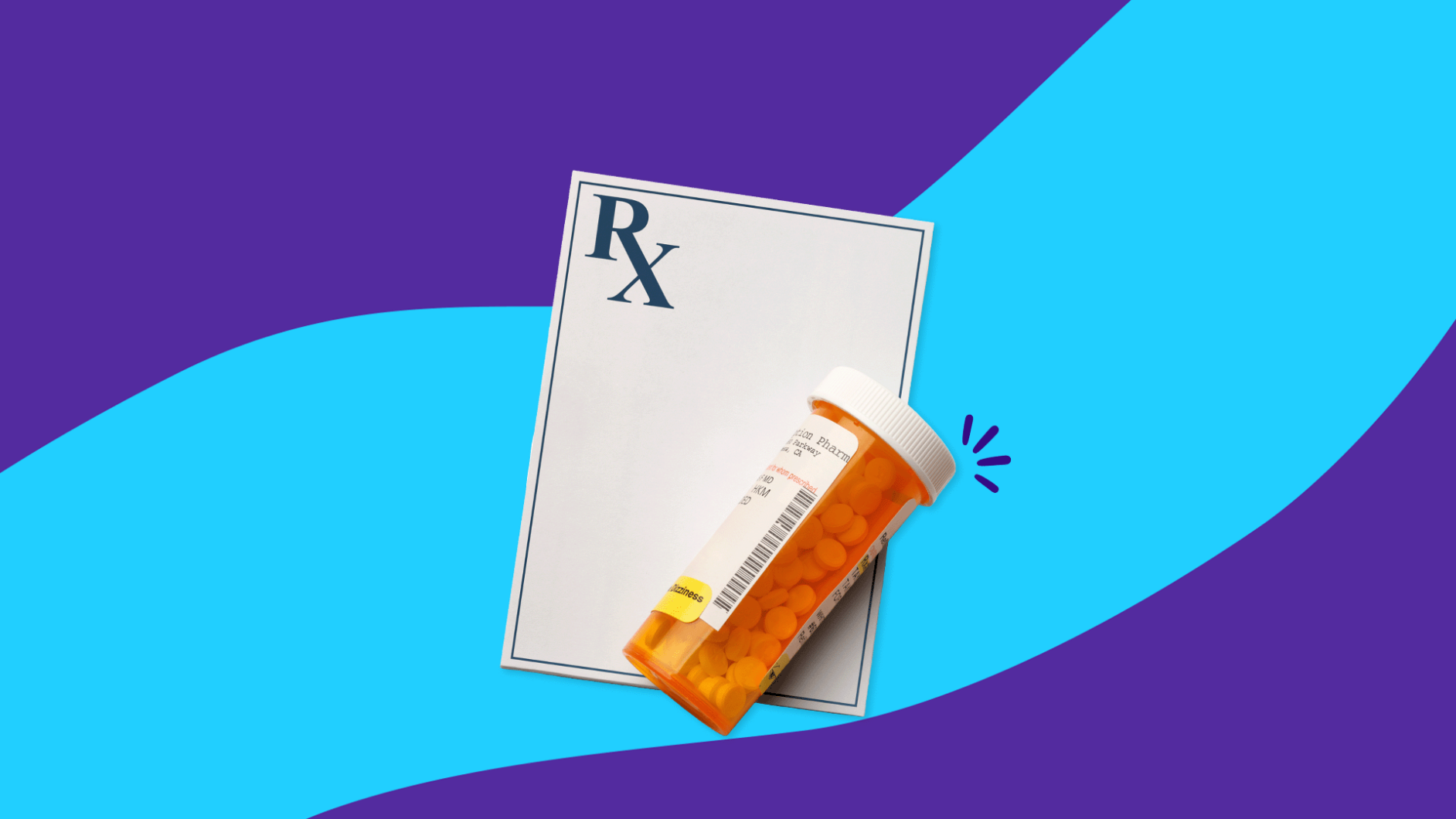Metoprolol is a generic prescription medication approved by the U.S. Food and Drug Administration (FDA). It is classified as a beta-blocker (in the same drug class as medications such as propranolol and atenolol) and works by relaxing blood vessels and slowing the heart rate to lower blood pressure and improve blood flow. Metoprolol may be prescribed alone or with other medications (such as hydrochlorothiazide) to treat high blood pressure (hypertension). It can also treat angina (chest pain) or improve survival after a heart attack. Metoprolol can also be used with other medicines to treat heart failure. Common side effects of metoprolol include tiredness, dizziness, diarrhea or constipation, depression, shortness of breath, low blood pressure, slowed heart rate, and nightmares.
There are two forms of metoprolol. Metoprolol tartrate is an immediate-release tablet often referred to by the brand name Lopressor. Metoprolol succinate is an extended-release medication. It’s often prescribed as a tablet by the brand name of Toprol XL. Metoprolol succinate is also available as an extended-release sprinkle capsule called Kapspargo.
While taking metoprolol, it is important to be aware of interactions and warnings so you can stay as safe as possible. Continue reading to learn more about how to take metoprolol safely and avoid interactions.
Key takeaways:
- Metoprolol is available in various immediate-release and extended-release formulations with similar drug interactions.
- Some examples of metoprolol interactions include monoamine oxidase inhibitors (MAOIs), drugs that slow the heart rate, and drugs that affect an enzyme called CYP2D6.
- It is important to consult a healthcare professional to make sure there are no drug interactions, always keep an updated list of medications, and ask your doctor before starting any new medicines.
Metoprolol-drug interactions
Metoprolol can interact with various prescription and over-the-counter (OTC) medications to varying degrees of severity. Before you take metoprolol, tell your healthcare provider about all the medications you take, including prescription drugs, OTC medicines, vitamins, and supplements. Check with your doctor before starting any new medications while taking metoprolol.
Monoamine oxidase inhibitors (MAOIs)
Drugs in the MAOI class can have an additive effect with beta-blockers like metoprolol, which can cause low blood pressure or slow heartbeat. This can lead to vertigo (a spinning sensation), fainting, or orthostatic hypotension (a drop in blood pressure when you stand up from a sitting or lying down position). If you take an MAOI, your doctor may prescribe a lower dose of metoprolol and monitor you closely. Or, your doctor may choose a different drug to replace the MAOI. Some examples of MAOIs include:
- Azilect (rasagiline)
- Emsam (selegiline)
- Marplan (isocarboxazid)
- Nardil (phenelzine)
- Parnate (tranylcypromine)
- Zyvox (linezolid)
CYP2D6 inhibitors
Metoprolol is metabolized in the body by an enzyme called cytochrome P450 2D6 (CYP2D6). Other medications that inhibit this enzyme can lead to increased levels of metoprolol in the body, which can cause serious side effects. If possible, the combination of interacting drugs should be avoided. If this is not possible, the patient should be closely monitored. Some examples of drugs metabolized by CYP2D6 include:
- Antidepressants such as Paxil (paroxetine), Wellbutrin (bupropion), Prozac (fluoxetine), and Zoloft (sertraline)
- Antipsychotics such as Haldol (haloperidol) or chlorpromazine
- Antiarrhythmics (medicines for an irregular heartbeat) such as quinidine or propafenone
- Antiretrovirals such as Norvir (ritonavir)
- Antihistamines such as Benadryl (diphenhydramine)
- Antimalarial drugs such as Plaquenil (hydroxychloroquine)
- Antifungal medicines such as Lamisil (terbinafine)
Drugs that cause bradycardia (slow heart rate)
Beta-blockers like metoprolol slow the heart rate, so if metoprolol is combined with another drug that slows the heart rate, there is an increased risk of bradycardia. If the combination cannot be avoided, the patient will be closely monitored. Examples of drugs that cause bradycardia include:
- Certain calcium channel blockers such as Calan (verapamil) or Cardizem (diltiazem)
- Catapres (clonidine)
- Lanoxin (digoxin)
Alpha-adrenergic blockers
Alpha-blockers lower blood pressure, and the effect may be potentiated by beta-blockers like metoprolol. If you take an alpha-blocker, consult your healthcare provider for medical advice.
Different alpha-blockers may require different interventions. For example, metoprolol may worsen orthostatic hypotension caused by prazosin. But clonidine has a different interaction—if you are taking both clonidine and metoprolol and need to stop taking clonidine, you will need to stop taking metoprolol a few days before you stop taking clonidine to lower the risk of rebound high blood pressure. Examples of alpha-blockers include:
One exception is in people who have an adrenal gland tumor called pheochromocytoma. In these individuals, metoprolol should be used along with an alpha blocker after the alpha blocker has been started.
Over-the-counter cough, cold, and flu medicines
Many over-the-counter cough, cold, or flu medications contain multiple ingredients that can interfere with heart or blood pressure conditions—in addition to interfering with your medication. If you need to take an OTC medication, ask your doctor or pharmacist what the safest options are based on your medical conditions. Some examples of medications that may interact with your condition or medication include:
- Decongestants such as pseudoephedrine or phenylephrine can increase blood pressure and/or decrease the effect of metoprolol
- Antihistamines like Benadryl (diphenhydramine) can increase the risk of metoprolol adverse effects, including low blood pressure and slow heart rate
- Nonsteroidal anti-inflammatory drugs (NSAIDs) like ibuprofen, aspirin, or naproxen can make metoprolol less effective
EpiPen (epinephrine)
Epinephrine is a life-saving medicine used for severe allergic reactions. Metoprolol should be used with caution in people who have a history of anaphylactic reactions. These individuals may have more severe reactions to allergens while taking metoprolol—and may also be unresponsive to the usual doses of epinephrine used to treat the allergic reaction. If you have a history of allergic reactions, ask your doctor for medical advice.
Ergots (a type of migraine medication)
Ergot alkaloids are medications sometimes prescribed to treat acute migraine attacks and contain ingredients like ergotamine or dihydroergotamine. The combination of an ergot and a beta-blocker should be avoided, if possible. This combination could potentially cause decreased blood flow to the extremities, causing cold extremities or gangrene (dead tissue caused by lack of blood flow). Ergot alkaloids are contraindicated (should never be used in) people with high blood pressure or heart disease.
Other metoprolol interactions
In addition to drug-drug interactions, it’s always important to know if your medication interacts with certain foods, drinks, or medical conditions. While metoprolol does not have any notable food interactions, it is recommended to be taken with or just after a meal. Here are some other interactions and warnings to be aware of.
Metoprolol and alcohol
Before taking metoprolol, it’s a good idea to discuss alcohol consumption with your healthcare provider. Limiting alcohol may be a recommendation for the management of your health condition. Also, alcohol can cause dizziness and lightheadedness, as can metoprolol, so the combination could worsen side effects. If you drink alcohol, talk to your healthcare provider, who can offer personalized medical advice based on your medical history.
While metoprolol is often prescribed as an immediate-release tablet (Lopressor) or extended-release tablet (Toprol XL), individuals who take Kapspargo, an extended-release sprinkle capsule formulation of metoprolol, should note that the prescribing information recommends avoiding alcohol completely. This is because the medicine is designed to release over a period of time, and alcohol speeds up the process, making the drug release faster into the body. This can increase the risk of metoprolol side effects.
Metoprolol and caffeine
Caffeine can increase heart rate and blood pressure, and it can also decrease the effectiveness of beta-blockers like metoprolol. Small amounts of caffeine may be okay, though, depending on your medical history. Ask your healthcare provider how much caffeine is safe for you to consume.
Metoprolol and certain medical conditions
Before taking metoprolol, tell your physician about all of your medical conditions and medical history, as well as your family history. Metoprolol is not safe for everyone. You should not take this medication if you:
- Are allergic to metoprolol, any beta-blocker, or any ingredient in the medication
- Have severe bradycardia (slow heart rate)
- Have second-degree or third-degree heart block (interference with electrical signals that tell your heart when to beat)
- Are in cardiac shock (a life-threatening emergency where the heart cannot pump enough blood and oxygen to the brain and other organs)
- Have decompensated heart failure
- Have sick sinus syndrome (heart rhythm problems caused by the heart’s pacemaker) unless you have a permanent pacemaker
- Have a severe peripheral arterial circulatory disorder (a narrowing or blockage of the vessels that carry blood from the heart to the legs)
Additionally, patients who have had a heart attack should not take metoprolol if the heart rate is less than 45 beats per minute, if they have second-degree or third-degree heart block (or significant first-degree heart block), if the systolic blood pressure is less than 100 mmHg, or if they have moderate to severe heart failure.
Metoprolol may be prescribed with caution and close monitoring in individuals with certain medical conditions, such as liver disease, heart conditions, thyroid conditions, or diabetes. For example, people with diabetes closely monitor blood sugar, and beta-blockers like metoprolol can increase the risk for low blood sugar and mask warning signs of low blood sugar. Metoprolol can also mask signs of hyperthyroidism (overactive thyroid), like a fast heart rate, because it slows the heart rate.
If you are pregnant or breastfeeding, consult your healthcare provider for professional medical advice.
How to minimize metoprolol interactions
Here are some tips to minimize the risk of metoprolol interactions:
- Before taking metoprolol, make sure your doctor knows your full medical history and all of the medications you take, so they can screen for drug interactions or other potential problems. While taking metoprolol, do not start any new medications unless approved by your doctor. Keep an updated list of your medications with you.
- Metoprolol may cause fatigue and dizziness. Do not drive or operate machinery until you know how metoprolol affects you.
- Avoid or limit alcohol while taking metoprolol. If you drink alcohol, consult your doctor for medical advice.
- Know the possible side effects of metoprolol—side effects can worsen if you take an interacting drug. Common side effects include tiredness, dizziness, constipation or diarrhea, depression, shortness of breath, low blood pressure, slow heart rate, and nightmares. Report side effects to your doctor, or get emergency medical help for severe symptoms. You should also get emergency medical help if you experience symptoms of an allergic reaction, such as hives, trouble breathing, or swelling of the face, lips, tongue, or throat.
When to talk to a healthcare provider about metoprolol interactions
Because there are various potential metoprolol interactions, this article does not provide a complete list. It is important to communicate with your healthcare provider about all of your medical conditions and the medications you take. This will help minimize the risk of interactions and ensure proper management and monitoring.
Sources
- Toprol XL – metoprolol succinate tablet, extended-release, National Library of Medicine DailyMed
- Lopressor – metoprolol tartrate tablet, National Library of Medicine DailyMed
- Kapspargo – metoprolol succinate capsule, extended-release, National Library of Medicine DailyMed
- Metoprolol, National Library of Medicine MedlinePlus
- Metoprolol tartrate – drug summary. Prescribers’ Digital Reference
- Metoprolol succinate – drug summary. Prescribers’ Digital Reference
- Metoprolol tablets, Cleveland Clinic
- Metoprolol, StatPearls











